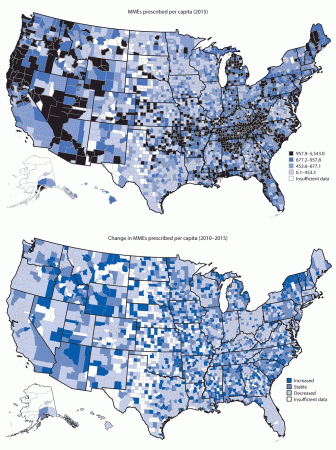The number of prescriptions for opioid painkillers written in some South Jersey counties increased between 2015 and 2010, bucking the national trend of a decline in opioid prescription rates, the Centers for Disease Control and Prevention found.
Cumberland and Cape May counties saw an increase in opioid prescription rates over that period, while the prescription rate in Atlantic, Camden, Salem, Gloucester and Burlington counties remained stable, but much higher than the prescription rate in North Jersey, the CDC found.
The report, part of a nation-wide review of opioid prescription rates published last week, showed that South Jersey has some of the highest opioid prescription rates in the nation.
The CDC report found some socio-economic characteristics were associated with a higher rate of opioid prescription: “a larger percentage of non-Hispanic whites; higher rates of uninsured and Medicaid enrollment, lower educational attainment; higher rates of unemployment; micropolitan status; more dentists and physicians per capita; a higher prevalence of diagnosed diabetes, arthritis, and disability; and higher suicide rates. Together, these factors explain approximately 32% of the variation in the amount of opioids prescribed at the county-level.”
 Gov. Chris Christie has made reducing opioid deaths something of a crusade for his last year in office. Some of his effort has centered around making it tougher to prescribe opioids.
Gov. Chris Christie has made reducing opioid deaths something of a crusade for his last year in office. Some of his effort has centered around making it tougher to prescribe opioids.
In the north of the state opioid prescription rates declined over the five-year period the CDC looked at. The report discovered, however, that even as prescription rates declined, opioid-related deaths increased. “These increases have been driven largely by use of illicit fentanyl and heroin,” the report’s authors wrote. (Read the full report here).
An investigation by Stephen Stirling and Erin Petenko last month showed how New Jersey raked in cash to write more fentanyl prescriptions, even as the death rate from the drug soared.